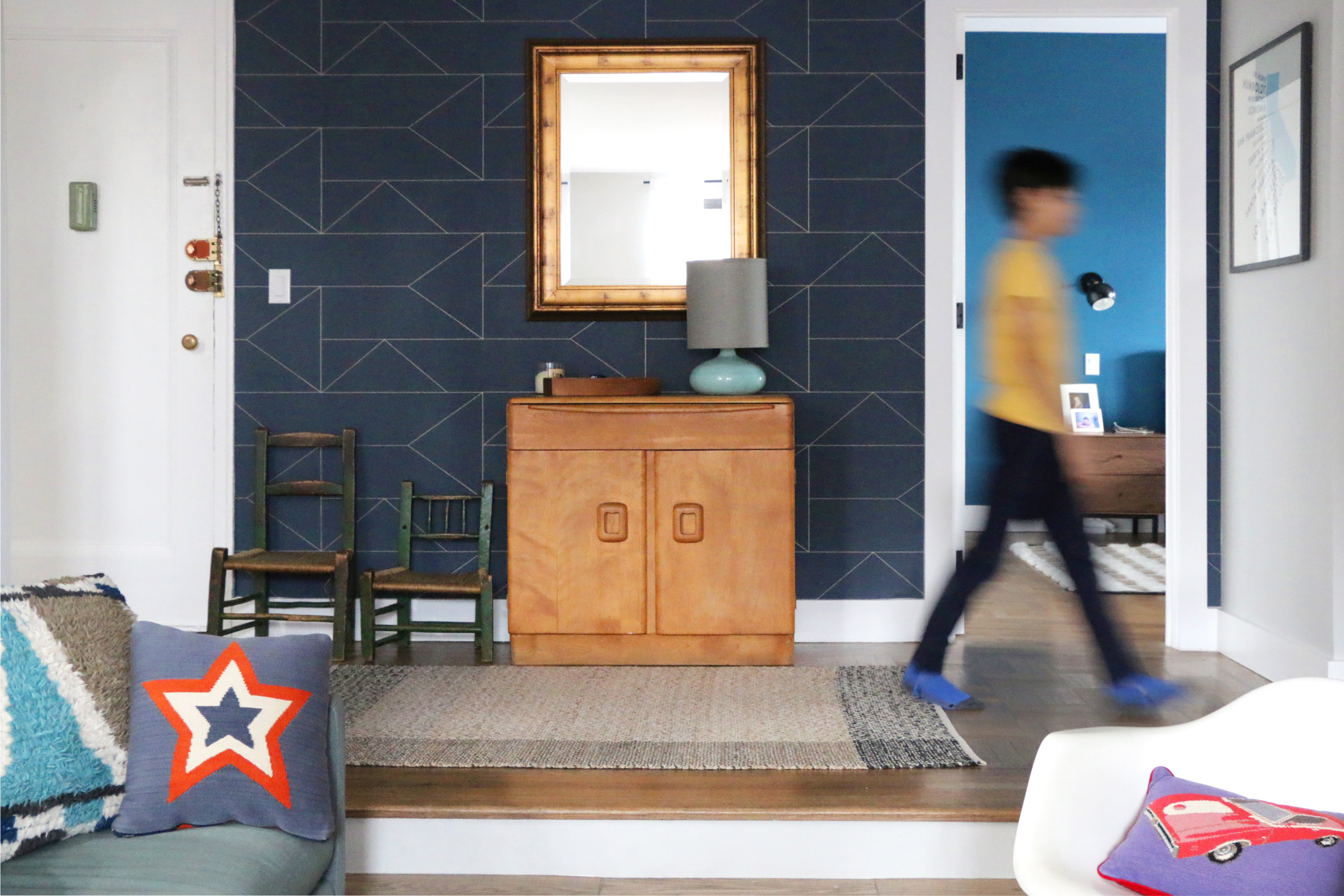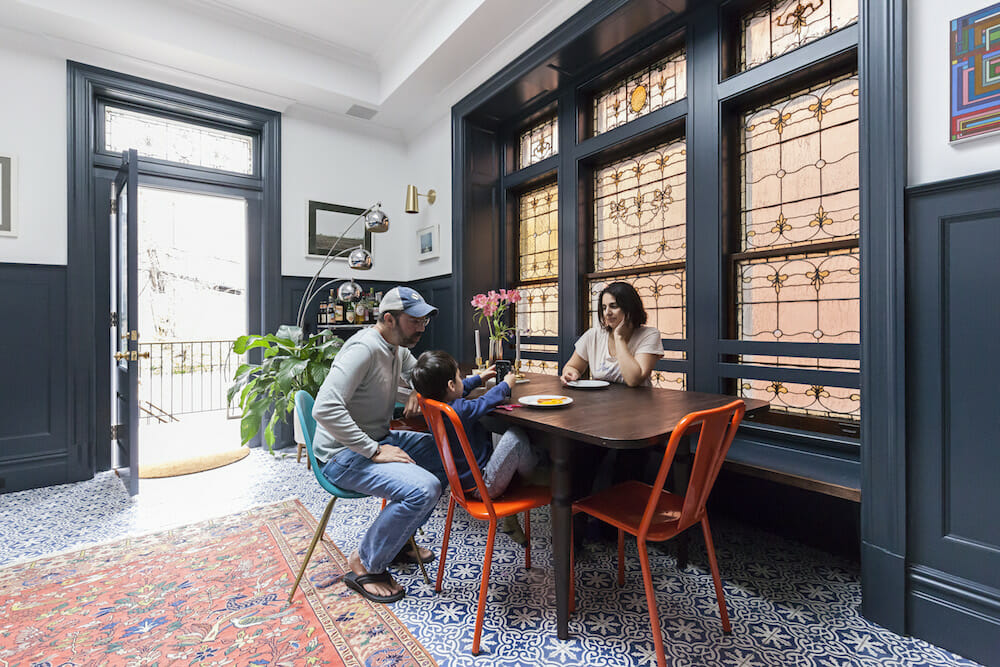Why Wallpaper is Easier Than Ever to Use
New techniques, ease of use, and if wallpaper can hang in bathrooms

More and more designers, contractors and homeowners believe that one of the best ways to make a bold design statement is to opt for wallpaper over paint. It provides hundreds of looks and textures that a regular paint job can’t match. And while more expensive than traditional paint, wallpaper is usually less expensive than hiring a painter to create a decorative surface.
Sweeten, a free renovation platform that matches homeowners with licensed general contractors and tracks their projects, shows why this covering is gaining in popularity.
Improved techniques
Although wallpaper has been around for years, there are a few reasons for its resurgence in popularity. For one, people who grew up with it in their homes may have soured on it, but thanks to new printing and manufacturing techniques, manufacturers are producing dozens of new colors, designs, and textures, sparking a renewed appreciation for the product. “Wallpaper has become much more interesting, ” said Sweeten designer Tina. “It’s not your grandmother’s wallpaper anymore. Even if you are going for a minimalist look, a textured wallpaper adds so much more than flat paint to a room.”
Homeowners are increasingly asking for wallpaper in their homes. Tina tells how one of her clients already had wallpaper picked out for one of the rooms before they even met to discuss the project. “People are much more receptive than they used to be,” said Tina ” One reason may be that they see so many design ideas on the internet where in the past you could only see ideas in magazines. There was no option to see the world quickly.”
- Raffia in Jessica + Alex’s foyer
- Brooke + Sam’s bold and moody wallpaper
- Black and white wallpaper in Brooke + Sam’s bathroom
(Above) Jessica + Alex’s textured wallcovering; Brooke + Sam added floor-to-ceiling patterns to both bathrooms
Some of the types of designs that are getting noticed include 3D papers where the design seems to pop off of the wall, gradient papers where the colors and designs transition from floor to ceiling, metal looks, and geometric shapes. Custom printed options are also available. There are services that allow you to upload a photo or some other design you’ve created and have it turned into wallpaper. Sweeten brings homeowners an exceptional renovation experience by personally matching trusted general contractors to your project, while offering expert guidance and support—at no cost to you. Renovate expertly with Sweeten
Where to use wallpaper
Most designers use it in the main living areas: living room, dining room, and bedrooms. Some use it on an accent wall to make a bold statement. Others cover all of the walls, some even use it on ceilings.
The use of wallpaper in bathrooms is a matter of contention among designers and contractors. “I don’t like to use it in full bathrooms because of the moisture problems,” said Sweeten contractor Ilya. “I’ve seen people put it in the shower area. I personally would not do that.” It should be noted that some wallpapers are designed for use in high-moisture areas.
Ilya has used wallpaper in powder rooms. In a recent remodel in Red Hook, the client “chose a bold print wallpaper that brings the whole space to life,” he said. The wallpaper has a white background with a large green floral print. The powder room has matte back accessories.
Designer Tina does not use it in bathrooms because she prefers to utilize tile that runs up to the ceiling. “But I do like it in powder rooms to create a jewel-box effect,” she said.
Working with wallpaper
Another reason for the increased popularity is that today’s products are easier to work with than older versions. “It’s still an art form to hang wallpaper correctly,” said Ilya. “But it is easier than it used to be and it is also easier to match patterns.”
Depending on the product, wallpaper comes prepasted, and soaking the sheets in water activates the adhesive. Another method is to apply adhesive to the paper or directly to the wall. Spreading adhesive on the wall tends to be less messy than brushing it on the back of the paper and then transferring the sheet to the wall.
Many papers are listed as strippable or peelable, meaning it is easy to get them off of the walls when it is time for a change. Ilya says that when you do remove the wallpaper, it is necessary to skim coat the walls before painting. If new wallpaper is called for, you should remove all of the old adhesive and prime the wall.
Types of wallpaper
Wallpaper is made from a number of materials, but some form of vinyl is the most common. The material is durable, easy to keep clean, and many vinyl papers are easy to remove. There are a number of products that contain vinyl in some way.
- Solid vinyl – This thick paper consists of a solid layer of vinyl laminated to a paper or fabric substrate. This is the most durable of vinyl-containing products.
- Vinyl coated fabric – Liquid vinyl coats a fabric base, making the paper breathable.
- Vinyl coated paper – A liquid coating is applied to a paper base. These papers are easy to clean and remove, but not as durable as a solid vinyl paper.
- Powder room in the Brooklyn Heights Designer Showhouse
- Barbra + Sean’s ceiling topper
- Nazli + Larry’s powder room
(Above) Laura + Randy’s entryway, Mitzie + Jenifer’s foyer, Brooklyn Heights Designer Showhouse powder room, Barbra + Sean’s ceiling, Nazli + Larry’s powder room
Other types include:
- Non-woven paper – This is a combination of natural and synthetic materials similar to those used in making tea bags and coffee filters. It is durable, washable, tear-resistant, and breathable.
- Grasscloth – Natural materials like hemp or seagrass are woven with cotton and attached to a natural backing. These papers offer striking designs, but they are difficult to hang and keep clean. Best for low traffic areas.
- Flock wallpaper – In this product, a material, such as wool or rayon, is applied to an adhesive backing, creating a raised design. The distinctive designs are difficult to clean and best left to low-traffic areas like bedrooms and formal living rooms.
- Metallic wallpaper – These foil products contain aluminum or some other metal added to the surface of the paper. Available in solid metallic colors, such as gold, brass, and copper or in geometric and other designs. Some of these metallic papers require a specialized application.
Wallpaper, even a small installation, can go a long way. With its various patterns, colors, and tactile designs, consider it as a decorative accessory that lends a pop of texture.
—
Sweeten founder and CEO weighs in on what to know before renovating a brownstone.
Sweeten handpicks the best general contractors to match each project’s location, budget, scope, and style. Follow the blog, Sweeten Stories, for renovation ideas and inspiration and when you’re ready to renovate, start your renovation with Sweeten.

















